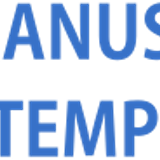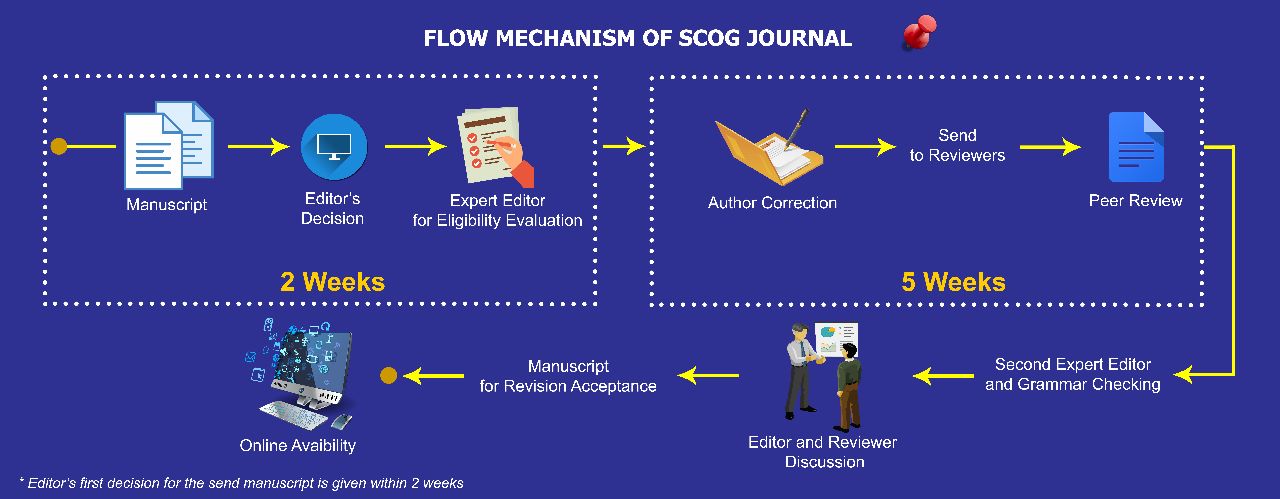BIOREMEDIATION OF PETROLEUM HYDROCARBON IN CONTAMINATED SOILS: COMPARISON OF COMPOST AND WWTP SLUDGE RESIDUAL ADDITION (BIOREMEDIASI TANAH TERCEMAR PETROLEUM HYDROCARBON: PERBANDINGAN PENAMBAHAN KOMPOS DAN LUMPUR IPAL)
Abstract
Crude oils processing into energy continue to increase, hence treatment for its environmental impact is needed. The objectives of the study is to determine the differences in bacteria growth rate and removal efficiency of Total Petroleum Hydrocarbon (TPH) between compost and WWTP (Waste Water Treatment Plant) sludge addition at 5% and 10% concentration levels. Those effects were acknowledged through experiments in laboratory scale using soil contaminated by 5,5% TPH within 5 weeks until it reach less than 1% as the requirement. The soil comes from Marunda Beach, compost from UPS Merdeka, WWTP sludge from Jababeka, and bacteria isolated from soil contaminated in the area surrounding refining. The treatment used in this experiment was landfarming with nutrition addition and the main variable analyzed was TPH and the microorganism population. Results of this study show that the bacteria growth rate in compost and WWTP sludge at 5% and 10% concentration each are 0,7567/weeks and 1,154/week for compost and also 0,8783/week and 1,1109/week for WWTP sludge. The TPH removal efficiency obtained was 95,32% and 96,85% for the addition of compsot as well as 91,15% and 91,02% for the addition of WWTP sludge at 5% and 10% concentrations. Base on a t-Test, the differences between all the variation of concentrations are not significant. The correlation test between TPH degradation to bacteria growth showed that there is a weak downward (negative) linear relationship.
Kegiatan pengelolaan minyak bumi terus meningkat, maka dari itu dibutuhkan tindakan penanganan pemulihan kondisi lingkungan yang disebabkan oleh kegiatan tersebut. Penelitian ini bertujuan untuk mengetahui perbedaan laju pertumbuhan bakteri dan efi siensi penyisihan Total Petroleum Hydrocarbon (TPH) dengan variasi perlakuan pemberian kompos dan lumpur residu pengelolaan air limbah. Penelitian dilakukan dalam skala laboratorium dengan konsentrasi awal TPH sebesar 5,5% selama 5 minggu atau sampai TPH mencapai konsentrasi kurang dari 1% sesuai dengan baku mutu. Tanah yang digunakan berasal dari Pantai Marunda, Bekasi. Kompos berasal dari UPS (Unit Pengolah Sampah) Merdeka, Depok. Lumpur Instalasi Pengelolaan Air Limbah (IPAL) berasal dari Jababeka. Isolat bakteri yang digunakan berasal dari tanah tercemar TPH disekitar ,kilang minyak. Hasil dari penelitian menunjukkan laju pertumbuhan bakteri pada perlakuan penambahan kompos dan lumpur IPAL pada konsentrasi 5% dan 10% masing-masing adalah 0,7567/minggu dan 1,154/minggu untuk kompos, serta 0,8783/minggu dan1,1109/minggu untuk residu lumpur IPAL. Efisiensi penyisihan TPH yang diperoleh adalah 95,32% and 96,85% untuk penambahan kompos dan 91,15% dan 91,02% untuk penambahan residu lumpur IPAL pada konsentrasi 5% dan 10%. Berdasarkan hasil uji-t, perbedaan untuk masing-masing perlakuan tidaklah signifikan. Uji korelasi antara perubahan konsentrasi TPH dengan pertumbuhan bakteri menunjukkan hubungan lemah berbanding terbalik.Keywords
Full Text:
PDFReferences
Agency for toxic Substances and Disease Registry. (1999). Toxic Subtances Portal. Retrieved September2016, from http://www.atsdr.cdc.gov/: http://www.atsdr.cdc.gov/toxfaqs/tfacts123.pdf
Aiyoubi Shahi, Sevcan Aydin, Bahar Ince, Orhan Ince. (2016). Evaluation of Microbial Population and Functional
Genes During Bioremediation of Petroleum-Contaminated Soiils as an Effective Monitoring Approach. Ecotoxicology and Environmental Safety, 125, 2016, 153-160.
Aiyoubi Shahi, Sevcan Aydin, Bahar Ince, Orhan Ince. (2016). Reconstruction of Bacterial community Structure and Variation for enhanced Petroleum hydrocarbons Degradation Through Biostimulation of Oil Contaminated Soil. Chemical Engineering Journal, 306, 2015, 60-66.
Aiyoubi Shahi, Sevcan Aydin, Bahar Ince, Orhan Ince. (2016). The Effects of White-rot fungi Trametes versicolor and Bjerkandera Adusta on Microbial Community Structure and Functional Genes During the bioaugmentation Process following Biostimulation Practice of Petroleum Contaminated Soil. International Biodeterioration & Biodegradation, 114, 2016, 67-74.
Anat Bren, Yuval Hart, Erez Dekel, Daniel Koster, Uri alon. (2013). The Last Generation of Bacterial Growth in Limiting Nutrient. BMC Syst Biol, 7, 27, 1-9
Baker, K. H. (1994). Bioremediation. USA: McGraw-Hill.
EPA. (2014). Paten No. EPA 2014/0323. Sydney.
EPA, L. R. (1998). Scinece and Technology to Treat Contaminated Soils, Sludges, and Sediment. Cincinnati. Ohio: National Risk Management Research Laboratory.
EPA, N. (2014). Sydney Paten No. EPA 2014/0323.
ERM Eurasia Limited. (2009). Environmental ans Social Impact Assessment (ESIA) for the Oil Refi nery (Stage 1) of the TANECO Oil Refinering and Petrochemical Complex, Nizhnekamsk, Republic of Tatarstan Russian Federation. Nizhnekamsk, Republic of Tatarstan, Russian Federation: ERM.
Fatihah Suja, Fazli Rahim, Mohd Raihan Taha, Nuraini Hambali, M. Rizal Razali, Alia Khalid, Ainon Hamzah. (2014). Effects of Local Microbial Bioaugmentation and Biostimulation on the Bioremediation of Total Petroleum Hydrocarbon (TPH) in Crude Oil Contaminated Soil Based on Laboratory and Field Observations. International Biodeterioration & Biodegradation, 90, 2014, 115-122.
Godleads Omokhagbor Adam, P. T. (2015). Bioremediation, Biostimulation and Bioaugmentation: A Review. International Journal of Environmental Bioremediation & Biodegradation, 3, 1, 28-39.
Indonesia, D.E. (2009). Rencana Pengembangan Kilang Minyak di Indonesia. 60/HUMAS DESDM/2009.
K.S.H Yu, A.H.Y. Wong, K.W.Y. Yau, Y.S. Wong, N.F.Y. Tam. (2005). Natural Attenuation, Biostimulation, and Bioaugmentation on Biodegradation of Polycyclic Aromatic Hydrocarbon (PAHs) in Mangrove Sediments. Marine Pollution Bulletin, 51, 8-12, 1071-1077. (2003). KepMen LH No. 128 tahun 2003.
Lucian Vasile Pavel, Maria Gavrilescu. (2008). Overview of Ex Situ Decontamination Techniques for Soil Cleanup. Environmental Engineering and Management Journal 7, 6, 815-834.
Malik, A. (2006). Environmental Microbiology : Bioremediation. Dipetik November 26, 2015, dari http://nsdl.niscair.res.in/.
Michael E. Hibbing, Clay fuqua, Matthew R. Parsek, S. Book Peterson. (2010). Bacterial competition: Surviving and Thriving in the Microbial Jungle. Nat Rev Microbiol, 15-25.
P. Agamunthu, Y. T. (2013). Bioremediation of Hydrocarbon Contaminated Soil Using Selected Organic Waste. International Symposium on Environmental Scinece and Technology, 18, 2013, 694-702.
Pusat Teknologi Pengembangan Sumberdaya Energi. (2013). Sumberdaya Energi. (2013). Outlook Energi Indonesia 2013. Jakarta: PTPSE, BPPT.
Riser-Roberts, Eve. (1998). Remediation of Petroleum Contaminated Soils: Biological, Physical, and Chemical Processes. Florida: Lewis Publisher.
Sarkar D., Ferguson M., Datta R., Bimbaum S. (2005). Bioremediation of Petroleum Hydrocarbon in Contaminated Soils: Comparison of Biosolids Addition, Carbon Supplementation, and Monitored Natural Attenuation. Environmental Pollution, 136, 1, 187-195.
Sarles, William Bowen, William Carroll Frazier, Joe Bransford Wilson, Stanley Glenn Knight. (1956). Microbiology. New York: Harper & Brother.
Smith VH, Graham DW, Cleland DD. (1998). Application of Resources Ratio Theory to Hydrocarbon Biodegradation. Environmental Science and Technology, 32, 21, 3386-3395.
Sudrajat, H. R. (2006). Mengelola Sampah Kota, Solusi Mengatasi Masalah Sampah Kota dengan Manajemen Terpadu dan Mengolahnya Menjadi Energi Listrik & Kompos. Bogor: Penebar Swadaya.
Suthersan, Suthan S. (1999). Remediation Engineering Design Concepts. New York: Lewis Publisher.
Wei-Yu Chen, Jer-Horng Wu, Shih-Chiang Lin, Juu-En Chang. (2016). Bioremediation of Polychlorinatedp-dioxins / Dibenzofurans Contaminated Soil Using Simulated Compost-Amanded Landfill Reactors Under Hypoxic Condition. Journal of Hazardous Materials, 312, 2016, 159-168.
DOI: https://doi.org/10.29017/SCOG.40.1.35

This work is licensed under a Creative Commons Attribution-NonCommercial-NoDerivatives 4.0 International License.






